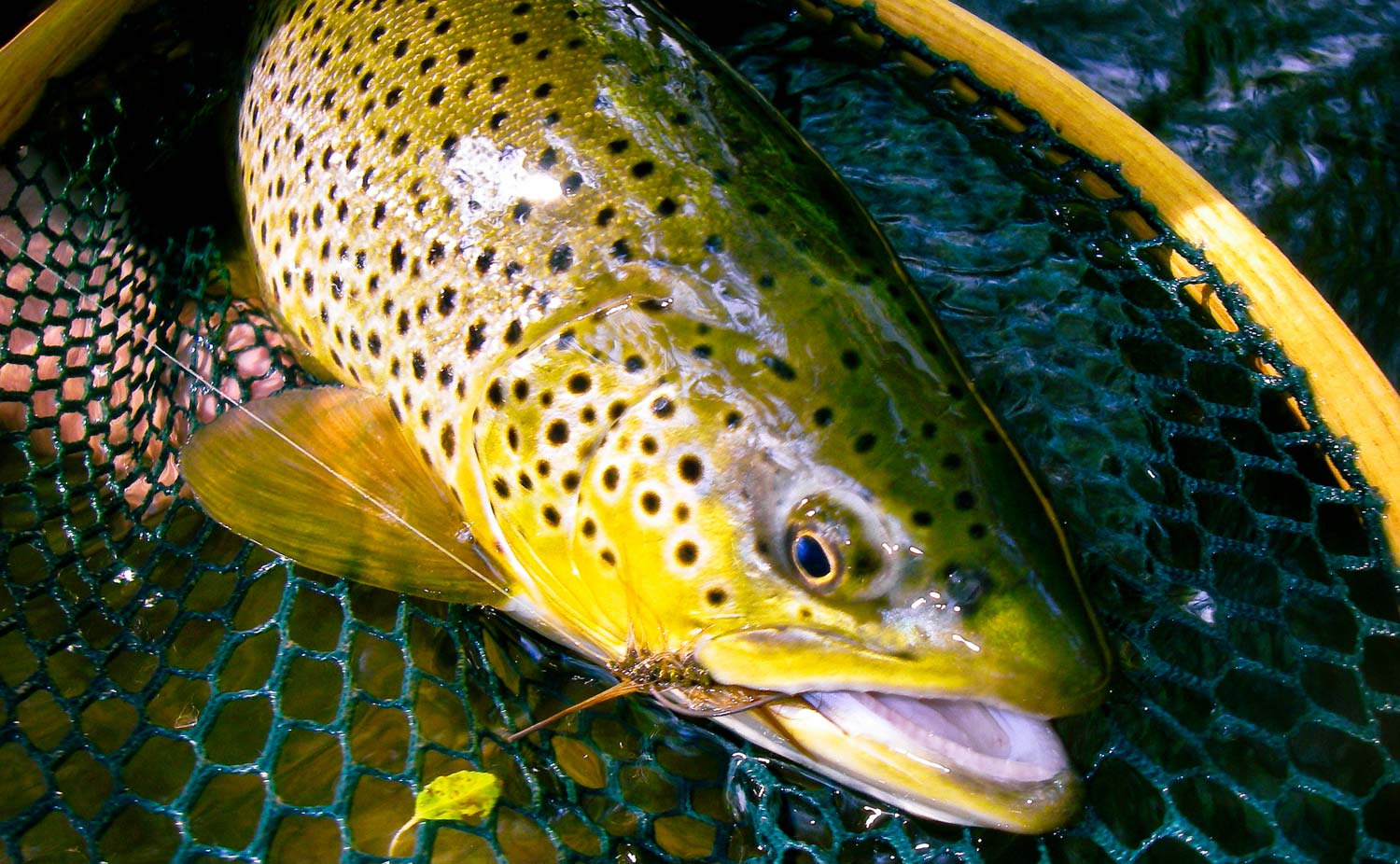
Photos by Louis Cahill
By Louis Cahill
There are a lot of “right ways” to fish a Woolly Bugger.
I know, I know, this is super basic but after we published the article “The Woolly Bugger Isn’t all that, Or is it?,” I got emails asking how to fish the Bugger. I’ve joked about writing this article plenty of times and now I think I was being a jerk. We obviously have readers who want the info, so here is is.
One of the emails I got asked specifically if the Bugger should be fished on a nine foot tapered leader or a five foot level leader. My immediate reaction was, “It depends on how you’re fishing it.”
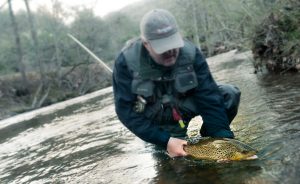 The reason the Woolly Bugger is possibly the greatest fly pattern ever tied is that there is almost no wrong way to fish it. It’s one of those rare patterns that looks like so many different types of food, it’s hard to make it unappealing. And not just for trout, I firmly believe you can catch anything that swims with a Woolly Bugger. I regularly wear out bonefish on a tan bugger.
The reason the Woolly Bugger is possibly the greatest fly pattern ever tied is that there is almost no wrong way to fish it. It’s one of those rare patterns that looks like so many different types of food, it’s hard to make it unappealing. And not just for trout, I firmly believe you can catch anything that swims with a Woolly Bugger. I regularly wear out bonefish on a tan bugger.
For the purpose of this article I’m going to focus on techniques for trout fishing. The Bugger can be fished as a nymph or a streamer and even an emerger. If you figure out how to tie one that will float, I guarantee it will work as a dry under the right conditions.
Let’s look at some techniques for fishing the Woolly Bugger is some of these different roles.
Fishing the Woolly Bugger as a nymph
It’s hard to beat a dead drifted Bugger for catching trout. Sink it with a split shot or build weight into the fly to get it down to the strike zone. Fish it under an indicator or high sticked on a tight line. Whatever approach you prefer, with the right amount of weight, a dead drifted bugger will produce.
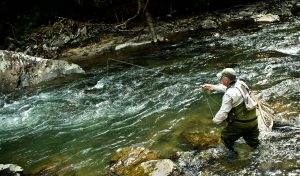 Some of the food items a bugger can pass for, when fished in this way, are stonefly nymphs, helgermites, craneflys, damsel and dragon flies, mayfly nymphs (in appropriate sizes), crawfish, leaches, baitfish, and tadpoles. The dead drift will almost always work but if you think about that list some other techniques become obvious.
Some of the food items a bugger can pass for, when fished in this way, are stonefly nymphs, helgermites, craneflys, damsel and dragon flies, mayfly nymphs (in appropriate sizes), crawfish, leaches, baitfish, and tadpoles. The dead drift will almost always work but if you think about that list some other techniques become obvious.
Remember I mentioned emergers? Stoneflies emerge by swimming or crawling from deeper water to the edge of the stream, where they crawl onto the bank and into stream side brush where they can shed their shuck and dry their wings. A Bugger, quartered downstream and swung toward the bank imitates this behavior perfectly. Swung with a twitch it makes a convincing crawfish. Strip it back upstream and it will pass for a small baitfish.
Fishing the Woolly Bugger as a streamer
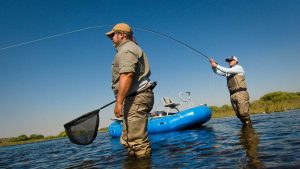 Huge streamers are all the rage these days, but a Woolly Buggers often imitates the small baitfish and the like available to trout more accurately. Even when I am throwing big streamers, which is often, I’ll tie a Bugger off the back. It often out produces it’s big brother. Fishing this way with a sinking line, usually from a boat, is the only time I use a short level leader.
Huge streamers are all the rage these days, but a Woolly Buggers often imitates the small baitfish and the like available to trout more accurately. Even when I am throwing big streamers, which is often, I’ll tie a Bugger off the back. It often out produces it’s big brother. Fishing this way with a sinking line, usually from a boat, is the only time I use a short level leader.
On smaller streams a Bugger can be fished effectively as a streamer with a lot of different approaches. Cast it across the current and strip it back, or swing it downstream, or a combination of the two. I like to do this with a floating line so I can mend the line to change the direction the fly swims. I’ll work it through every piece of tastey looking water I can on a single cast. Don’t be afraid to cast directly up or down stream and retrieve at an appropriate speed. Both work well on small streams.
The Woolly Bugger is dynamite on stillwater fisheries. Especially when damsel flies are active. An olive Bugger can make for some very memorable days. Tied with heavy led eyes and rubber legs, it can be bounced along the bottom like a crawfish. Mix up your retrieve until you figure out what the fish respond to. Fished in this way, the Bugger is the ultimate searching pattern.
The only wrong way to fish a Woolly Bugger is not to fish it.
For that reason, its a real friend to the beginning angler. If your presentation is less than perfect, the Bugger is a vary forgiving pattern. Just get it in the water and the fish will do the rest.
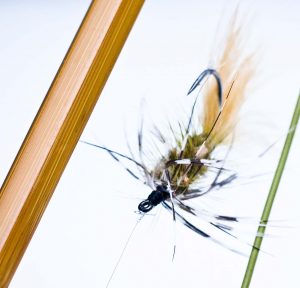 Tie then in every color an size you can think of. Tie them with different amounts of weight and try some with bead chain and led eyes. Rubber legs are almost always a great addition. I have buddies who tie Buggers so fancy they become completely different patterns, but the simplest Buggers are often the best. Brown, black and, above all, olive are classics for a reason. Two-tone versions are great attractors as well. I tie them as small as #16 and as large as #2 extra long. I usually dress them sparsely but bushy patterns will work too.
Tie then in every color an size you can think of. Tie them with different amounts of weight and try some with bead chain and led eyes. Rubber legs are almost always a great addition. I have buddies who tie Buggers so fancy they become completely different patterns, but the simplest Buggers are often the best. Brown, black and, above all, olive are classics for a reason. Two-tone versions are great attractors as well. I tie them as small as #16 and as large as #2 extra long. I usually dress them sparsely but bushy patterns will work too.
I hope this helps you think of the Woolly Bugger in new ways, and catch some fish you might have missed before. When my eyes get a little better I’ll shoot a video on how I tie my 60 second Woolly Bugger. It’s dead simple, incredibly effective and you can fill your box in a hurry.
Louis Cahill Gink & Gasoline www.ginkandgasoline.com hookups@ginkandgasoline.com Sign Up For Our Weekly Newsletter!
The first trout I caught on a fly was using a wooly bugger dead drifted through a narrow run. It was exhilarating to catch a trout in a fly.
I still use it for a variety of fish and it never fails to get some.
I have been tying balanced woolly buggers in various sizes and colors. I fish the large ones in a few large rivers under an indicator for steelhead, salmon, or large Alaska rainbows. I fish the smaller ones under an indicator in lakes. They work.